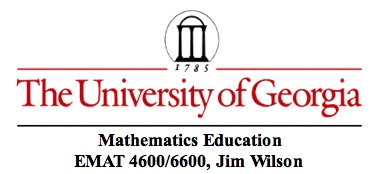

From My E-Mail:
Jim,
How do I make a pattern for a cone that is 12 inches tall and has a base diameter of 24 inches and a top diameter of 8 inches.Can you share the formula with me please?I know how it looks but it would take a lot of trial and error to get the measurements right.It is a transition for some pipe flues.
Thanks, Carl Condray, West Texas
As I understand what Carl needs to have, we want a pattern of this conical pedestal rolled out into a flat sheet.

Produce the pattern for cutting the material from a flat sheet to produce this cone with the tip cut off.
Construct the object (or a scale model of it) from a sheet of posterboard.
Some terms or descriptions from Geometry
Frustum -- The portion of a solid that lies between two parallel planes. Usually the portion of a solid is part of a cone or pyramid.
Oblique Frustum -- A frustum where the parallel plane figures do not have their centers along the same perpendicular. Here is one with a perpendicular connecting the two plane figures on an edge.
Need Help?
Yes. Click here for HINT to get started.
No. Proceed.
Click HERE for a solution. (to compare with your own).
Click HERE for an Excel write-up for a similar problem. The write-up was prepared by Simon Harders, Albury, N.S.W., Australia. Simon was trying to construct a variety of alcohol burners from beer cans and needed to construct truncated cones.
The Excel program is particularly useful when the inputs are the height of the frustum and the radii of the two circles with centers on the same perpendicular.
Paula's Challenge -
Paula wants to make a truncated cone where the height is 7 inches, the diameter of the base is 2 inches and the diameter of the top is .25 inches. This is a smaller, thinner truncated cone. Her application is for small objects made out of copper sheeting.
Click HERE to see a solution for Paula.
Consider Carl's request for a pattern if the desired project was to be an oblique frustum with a perpendicular edge.
LAMPSHADE MATHEMATICS
There are many resourses availble via a Google search that examine the "mathematics of a lampshade." One of the better presentations is
Matthews, Michael E., & Gross, Gregg (2008). Illuminating the Mathematics of Lamp Shades. Mathematics Teacher, 102(5), 332-335.